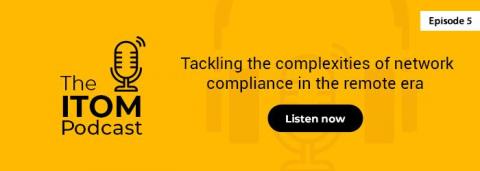Security | Threat Detection | Cyberattacks | DevSecOps | Compliance
Remote Work
Managing Compliance and Security in a Remote World
'Times they are a-changin' was a song performed by Bob Dylan many decades ago, but the words ring true now more than ever. The Covid-19 pandemic has had serious repercussions on the healthcare ecosystem and has shaken up the global economy. The pandemic has also forced millions to work remotely from their homes. According to analyst firm Gartner Inc., amid Covid-19, 88% of enterprises shifted to remote working for their employees.
Biometrics: Improving Security for Working from Home
Biometrics has been around for a long time but has only had limited adoption until recently. I was involved in some of the early commercial biometric devices way back in 2000; the company I was working for at the time investigated the possibility of using them, but back then the false positive rates on the devices we investigated were way too high – either people could not authenticate or it was authenticating the wrong people.
How to Keep Employees Productive While Working From Home | CurrentWare
The Future of Security and The Inevitability of Remote Working
By this time in 2020, you’re probably well past the panic of pandemic cybersecurity. The “New Normal” isn’t very new anymore and what was once perceived as short term crisis management of security is looking more like a long term solution. As we look ahead, it’s important to look at what we’ve learned from this situation, as security professionals and how we can apply that to the long road we still have ahead of us.
5 Tips for Training Non-IT Employees on Cybersecurity
In June, one research study found that the pandemic caused just over 40% of the entire US workforce to work from home full-time. Many businesses made the quick decision to allow employees to work remotely, scrambling to provide IT resources and remote-work tools on the fly. Now, many enterprises are doubling down and allowing employees to work from home for the foreseeable future.
The Future of Work: Enabling the Not-so New Normal
At this point in the pandemic, you’re probably tired of everyone referring to remote working as “the new normal.” Large companies like Facebook, Google, and Twitter have already announced that they will be working from home until the end of 2020 at the earliest, or as far out as August 2021. So, if these companies are any indication, we will all still be working from home for the foreseeable future.
Easy Ways to Boost Employee Productivity Remotely
Employee monitoring and productivity tracking features valuable insights into your teams’ performance levels throughout the day. If your office has been recently affected by the COVID-19 pandemic, you might also be transitioning into a more remote-friendly workplace environment. How do you make sure your employees are staying productive? Can you accurately measure an increase or decrease in your team’s overall productivity?
2020 Data Governance Trends Report: New Risks, New Rewards of Remote Work
In August 2020, Egnyte partnered with Wakefield Research to survey 400 C-Level IT executives from across the U.S.* to understand how the remote work revolution is changing their governance strategies, and what they’re doing to get ahead of this sea change.
How to ensure network compliance in this era of remote work: The ITOM Podcast [Episode 5]
The ITOM Podcast returns with yet another episode to help you eliminate all the remote work woes in your IT environment. In the last episode, we discussed in detail about the key areas enterprises need to monitor to ensure endpoint security, measures to adopt to ensure cybersecurity while rolling out BYOD policies, and the crucial factors that IT leaders need to know about in the post-pandemic era with respect to IT security.










